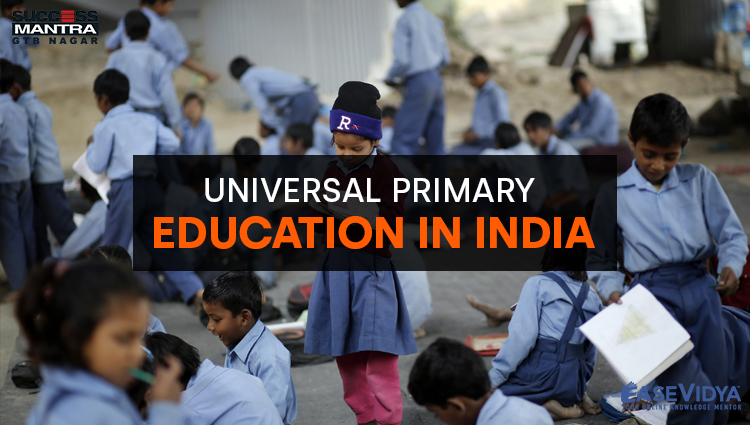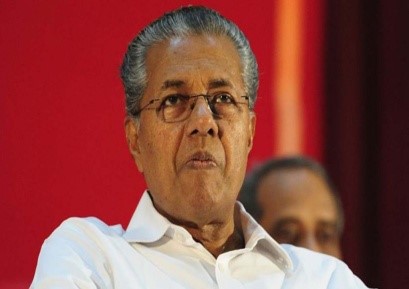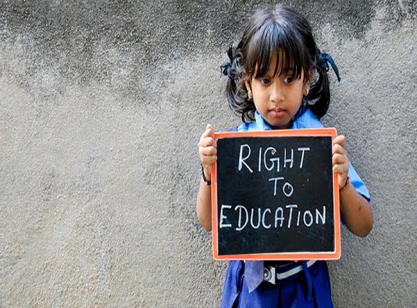
UNIVERSAL PRIMARY EDUCATION IN INDIA
UNIVERSAL PRIMARY EDUCATION IN INDIA

Nelson Mandela highlighted that Education is the liberator from the shackles of ignorance, poverty, and social and economic exclusion, through his famous quote “Education is the most powerful weapon which you can use to change the world.” The same thought is enshrined in the Universal Declaration of Human Rights (UDHR) in Article 26 which held that every individual has the right to education. However, seven decades after the UDHR, 58 million children are out of school globally and more than 100 million children get eliminated from the schooling system before completing primary education.
Ironically, India which once held the position of “Vishwa Guru” (world’s teacher), tops the list of countries with out-of-school children. But Kerala has shown a silver lining as it is now all set to be declared the first state in the country to achieve complete primary education. In this context, other states, especially Bihar, Jharkhand, West Bengal, Uttar Pradesh and Assam which rank low on the primary education levels in the country, could follow the Kerala Model of Education.
KERALA MODEL OF EDUCATION

Kerala that led the way by achieving complete literacy way back in 1991 has once shown that it is possible to achieve complete literacy even at the primary school level. However, this success story has roots in the historic royal rescript of Rani Gouri Parvati Bai, 1817 which proclaimed education as the “responsibility” of the state. Simultaneously, it emphasized that “political will” is more important than the political economy to decide the expenditure on education. Based on the efforts of the successive governments, Kerala is known for its highest literacy rate in the country and one hundred percent primary and secondary education enrollment. In order to universalize primary education, the Kerala government launched a special scheme Athulyam in October 2014. Through extensive surveys, people living in panchayats who had not yet completed their primary education or had dropped out of schools were traced. Convincing them to study again and sit for exams was the next step. They were given five months of training, enabling them to attend the fourth equivalency examination. Amartya Sen attributes the Kerala economic and social success to the consistency with which school education expanded, based on sustained public policies and action.
CHALLENGES IN UNIVERSALISATION OF EDUCATION
The Constitution of India provides for free and compulsory education for all children up to 14 years of age. In pursuance of this Government of India has enacted the Right to Education Act, 2009. However, the goal of universalization of primary education is still far from our reach. The factors that can be attributed to this are as follows:
Low Public Spending: The Incheon Declaration to which India is a signatory, expects member states to spend 4-6% of their GDP on education to achieve SDG4. to this declaration. However, the Union Budget 2021 budget allocates only 2.75 percent of the GDP to education.
Exclusive Private Sector: Many reports and available data shows a rise in the privatization of education with a large number of children being eliminated from the system at early stages, cost of education going up due to systemic inefficiencies, and students committing suicide for want of data and laptops.
Qualitative Issue: Universalization of compulsory education has failed to catch up to the desired target because quality control of primary education has not been maintained. The successive ASER survey reflects the poor state of learning outcomes in primary education.
Other Factors: Factors like ignorance and illiteracy of parents, lack of cooperation between school and local community, and corruption in recruitment of teachers affects the goal of universalization of education.
SUGGESTION & SOLUTIONS FOR UNIVERSALISATION

Active Role of State: To make education universal the state must find resources to provide ancillary services such as school health, mid-day meals, free supply of textbooks, writing materials, school uniform, etc. The Kerala model shows that comprehensive interventions pertaining to nutrition, health, sanitation, and early stimulation can help to achieve sustainable growth in human development.
Social Auditing: There should be a Village or Mohalla School Committee in each village or urban area. Such a committee would look after the construction and maintenance of buildings, playgrounds, and school gardens, provision for ancillary services, the purchase of equipment, etc. To discharge the duties, the committee will have sufficient funds by way of donations and grants-in-aid from the state government. For example, successive governments in Kerala have increased the capital outlay to education and simultaneously decentralized financing of education through local bodies
Engaging Civil Society: The success of Kerala is made possible thanks to the collective efforts of the various departments of the government, officials, volunteers, NGOs, and friendly associations.
CONCLUSION
The provision for Universal Elementary Education is crucial for spreading mass literacy, which is a basic requirement for economic development, modernization of social structure, and the effective functioning of democratic institutions. It also represents an indispensable first step towards the provision of equality of opportunity to all citizens. Thus, Indian society as a whole should take necessary steps to achieve universalization of primary education.
QUESTIONS (1-5)
Q.1 Which of the following states in India is all set to be declared the first state in the country to achieve complete primary education?
- Tamil Nadu
- Goa
- Karnataka
- Kerala: ANSWER
Q.2 Consider the following statements and state which of the following is incorrect in the context of the above mentioned passage?
- The Constitution of India provides for free and compulsory education for all children up to 14 years of age.
- The 86th Amendment in 2000 made education an enforceable right under Article 21 of the Indian Constitution: ANSWER
- Right To Education (RTE) Act, 2009 aims to provide primary education to all children aged 6 to 14 years and enforces education as a Fundamental Right.
- None of the above
Q.3 Which of the following articles has a provision for state-funded as well as equitable and accessible education?
- Part IV, Article 45 and Article 39 (f): ANSWER
- Part III, Article 42 and Article 39 (a)
- Part IV A, Article 51
- None of the above
Q.4 Which of the following statements is/are correct in the reference to the National Education Policy, 2020?
- Universalization of education from preschool to secondary level with 100% Gross Enrolment Ratio (GER) in school education by 2030.
- School governance is set to change, with a new accreditation framework and an independent authority to regulate both public and private schools.
- Only I follows
- Only II follows
- Both I and II are correct: ANSWER
- None is correct
Q.5 Which of the following is the first ad hoc commission set up by the Government of India to examine all aspects of the educational sector in India?
- Kothari Commission: ANSWER
- Athreya Commission
- Abid Hussain Commission
- None of the following












0 Comment